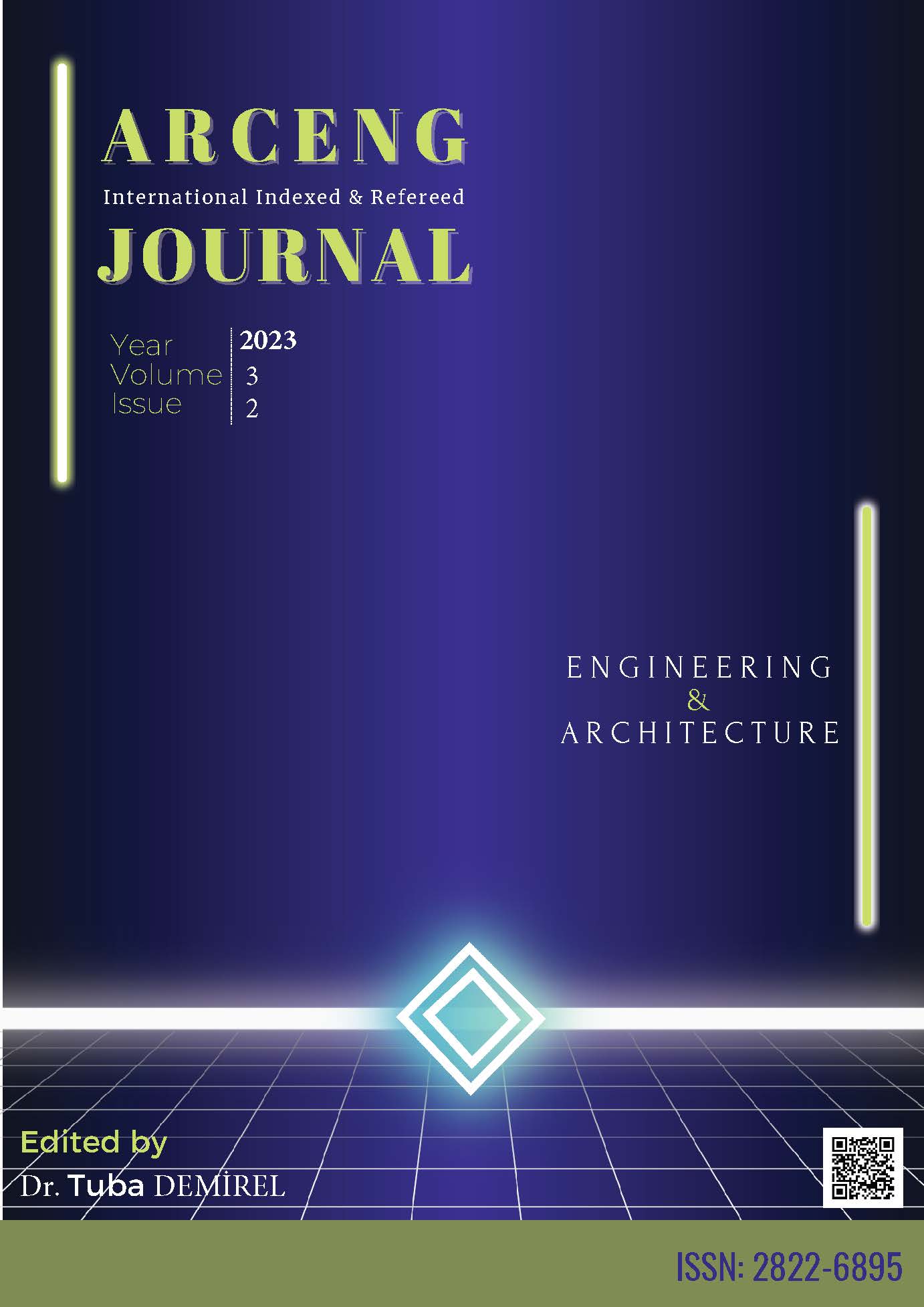STUDY OF THE PERFORMANCE OF BATCH BIOLOGICAL DENITRIFICATION USING LIGNOCELLULOSIC MATERIALS AS A CARBON SOURCE IN THE TREATMENT OF LOW C/N WATER
DOI:
https://doi.org/10.5281/zenodo.10470816Keywords:
Biological denitrification, acorn cups, Nitrate, Water treatmentAbstract
Nitrate pollution of groundwater and drinking water has become an increasingly serious problem across the world. In Algeria, pollution of groundwater by nitrates has become alarming. Excess nitrates in drinking water can cause childhood methemoglobinemia (blue baby syndrome) and the reduction of nitrate to nitrites in saliva can induce the formation of nitrosamines, which are known carcinogens. Among the different technologies available for nitrate removal involving ion exchange, reverse osmosis, electrodialysis, heterotrophic denitrification seem to be the most promising processes.In this process, the bacteria uses the nitrate for respiration, converting it to nitrogen gas through a series of reactions:
In the present study, in order to remove nitrates from simulated groundwater contaminated with nitrates, a natural organic substance; acorn cup powder was used as a carbon source and as a biofilm support for batch denitrification. The effect of various experimental conditions such as initial nitrate concentration, amount of carbon source and pH was studied.Batch tests were carried out in a 1L Erlenmeyer flask, 100 mL of inoculum was added to 900 mL of synthetic groundwater prepared with KNO3, mineral salts were added. The results obtained show that the system achieved high denitrification, nitrate removal was above 98% after 24 hours of incubation when the pH was 7, NO3- = 70 mg/L and 8 g/L concentration powder from acorn cups. The NO2- level in the effluent was less than 0.07 mg/L. Nitrate removal was above 95% after 3 hours of incubation when pH was 7.1, NO3- = 70 mg/L and 3 g/L biomass concentration. The NO2 level in the effluent was less than 0.0030 mg/L. Our results suggest that it is possible to use reed powder in denitrification with additional treatment for drinking water
References
Gibert O., Pomierny S., Rowe I. and Kalin R.M., Selection of organic substrates as potential reactive materials for use in a denitrification permeable reactive barrier (PRB), Bioresour. Technol., 99(16), 7587–7596 (2008)
Matiju V., Cizinska S., Krejci J. and Janoch T., Biological water denitrification - a review, Enzyme Microb. Technol., 14(3), 170– 183 (1992)
Nolan B.T., Ruddy B.C., Hitt K.J. and Helsel D.R., A national look at nitrate contamination of ground water, Water Cond. Purif., 39(12), 76-79 (1998)
Tsai H.H., Ravindran V., Williams M.D. and Pirbazari M., Forecasting the performance of membrane bioreactor process for groundwater denitrification, J. Environ. Eng. Sci., 3(6), 507-521 (2004)
Aslan S. and Turkman A., Simultaneous biological removal of endosulfan (alpha plus beta) and nitrates from drinking waters using wheat straw as substrate, Environ. Int., 30(4), 449–455 (2004)
Park J.B.K., Craggs R.J. and Sukias J.P.S., Removal of nitrate and phosphorus from hydroponic wastewater using a hybrid denitrification filter (HDF), Bioresourc. Technol., 100(13), 3175– 3179 (2009)
Mike S.M.J., The microbial nitrogen cycle, Environ. Microbiol., 10(11), 2903-2909 (2008)
Ovez B., Mergaert J. and Saglam M., Biological denitrification in drinking water treatment using the seaweed Gracilaria verrucosa as carbon source and biofilm carrier, Water Environ. Res., 78(4), 430–434 (2006a)
Schipper L.A., Robertson W.D., Gold A.J., Jaynes D.B. and Cameron S.C., Denitrifying bioreactors-an approach for reducingnitrate loads to receiving waters, Ecol. Eng., 36(11), 1532–1543 (2010b)
Lu H., Chandran K. and Stensel D., Microbial ecology of denitrification in biological wastewater treatment, Water Res., 64, 237-254 (2014)
Chu L. and Wang J., Denitrification performance and biofilm characteristics using biodegradable polymers PCL as carriers and carbon source, Chemosphere, 91(9), 1310–1316 (2013)
Ovez B., Batch biological denitrification using Arundo donax, Glycyrrhiza glabra and Gracilaria verrucosa as carbon source, Process Biochemistry, 41(6), 1289–1295 (2006)
Xu Z.X., Shao L., Yin H.L., Chu H.Q. and Yao Y.J., Biological denitrification using corncobs as a carbon source and biofilm carrier, Water Environ. Res., 81(3), 242–247 (2009)
Robertson W.D., Nitrate removal rates in wood chip media of varying age, Ecol. Eng., 36(11), 1581–1587 (2010)
Cameron S.G. and Schipper L.A., Hydraulic properties, hydraulic efficiency and nitrate removal of organic carbon media for use in denitrification beds, Ecol. Eng., 41, 1–7 (2012) 16. Hiraishi A. and Khan S.T., Application of polyhydroxyalkanoates for denitrification in water and wastewater treatment, Appl. Microb. Biotechnol., 61(2), 103–109 (2003)
Boley A. and Muller W.R., Denitrification with polycaprolactone as solid substrate in a laboratory-scale recirculated aquaculture system, Water Sci. Technol., 52(10−11), 495–502 (2005)
Chu L. and Wang J., Denitrification of groundwater using PHBV blends in packed bed reactors and the microbial diversity, Chemosphere, 155(3), 463–470 (2016)
Chu L. and Wang J., Nitrogen removal using biodegradable polymers as carbon source and biofilm carriers in a moving bed biofilm reactor, Chemical Engineering Journal, 170(1), 220–225 (2011)
Saliling W.J.B., Westerman P.W. and Losordo T.M., Wood chips and wheat straw as alternative biofilter media for denitrification reactors treating aquaculture and other wastewaters with high nitrate concentrations, Aquacul. Eng., 37(3), 222–233 (2007)
Lee K. and Rittmann B.E., Effects of pH and precipitation on autohydrogenotrophic denitrification using the hollow-fiber membranebiofilm reactor, Water Res., 37(7), 1551–1556 (2003)
Healy M.G., Rodgers M. and Mulqueen J., Denitrification of a nitrate-rich synthetic wastewater using various wood-based media materials, J Environ Sci Health A Tox Hazard Subst Environ Eng., 41(5), 779–788 (2006) 23. Park W., Jang E., Lee M.J., Yu S. and Kim T.H., Combination of ion exchange system and biological reactors for simultaneous removal of ammonia and organics, Journal of Environment Management, 92, 1148–1153 (2011)
Downloads
Published
How to Cite
Issue
Section
License
Copyright (c) 2023 ARCENG (INTERNATIONAL JOURNAL OF ARCHITECTURE AND ENGINEERING) ISSN: 2822-6895

This work is licensed under a Creative Commons Attribution-NonCommercial 4.0 International License.


